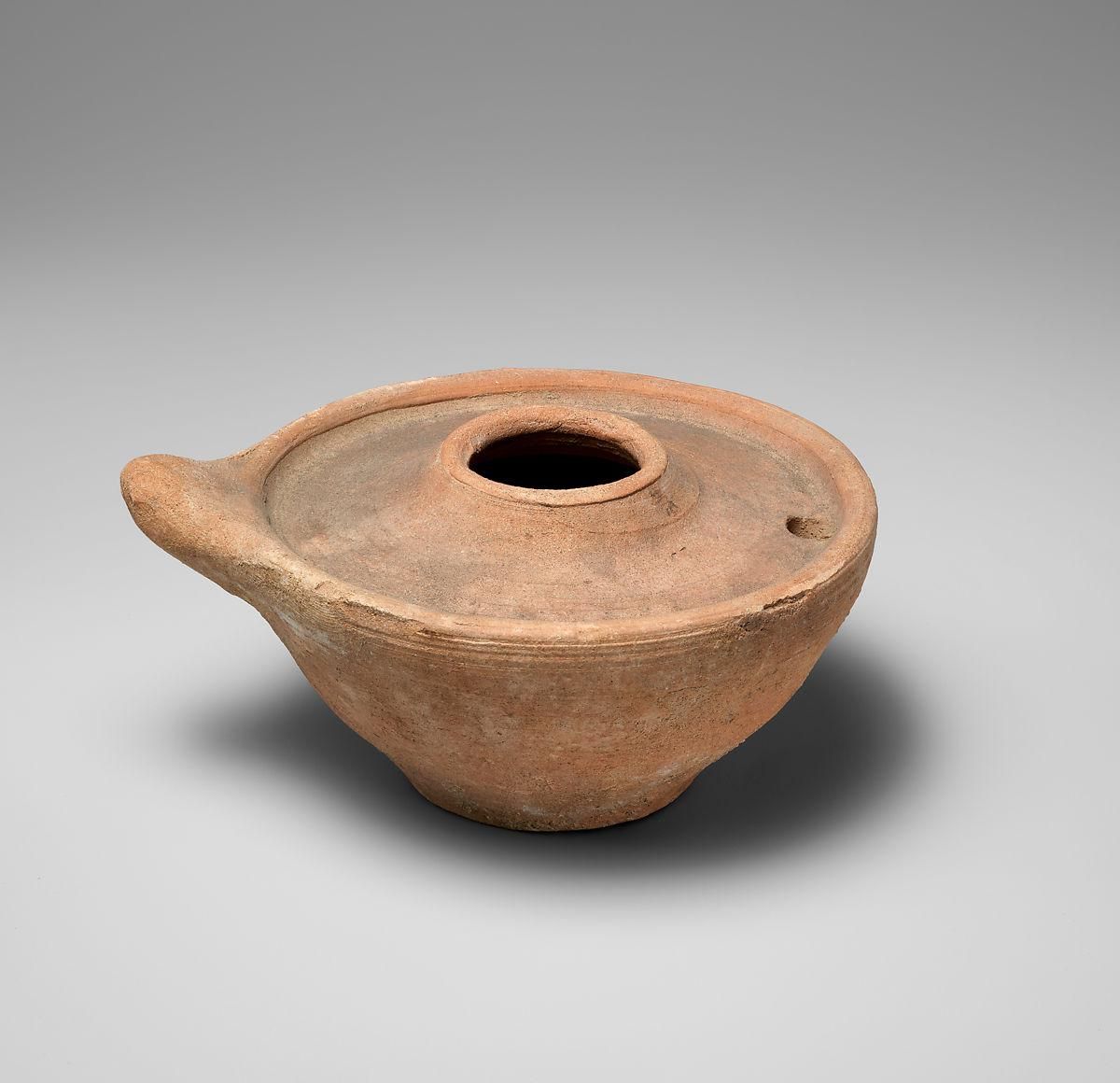
Lamp
Unknown Artist
Small lamps, like this example made from unglazed ceramic, would have been filled with oil and had a small wick threaded through the hole near the rim. The tab handle is used for picking up or moving the lamp. The lamp was excavated from a house at the site of Ma’aridh II in the Ctesiphon area. A very similar example was found at the nearby Taq-I Kisra palace (32.150.170).
The city of Ctesiphon was located on the east bank of the Tigris River, 20 miles (32 km) south of modern Baghdad in Iraq. It flourished for more than 800 years as the capital of the Parthians and the Sasanians, the last two dynasties to rule the ancient Near East before the Islamic conquest in the seventh century. Systematic excavations in the Ctesiphon area were undertaken by an expedition in 1928–29 sponsored by the German Oriental Society (Deutsche Orient-Gesellschaft). The Metropolitan Museum of Art and the Staatliche Museen, Berlin, undertook a joint expedition for one season in 1931–32. Several excavations were conducted, including at the main palace (Taq-i Kisra), in a small fortified area south of the palace at Tell Dheheb, at multiple houses at the mounds of Ma’aridh, and at additional houses at a small mound called Umm ez-Za’tir.
Over the course of the excavations in the Ctesiphon area, six houses from a series of small mounds called el Ma’aridh were excavated. These houses follow typical Sasanian design with a mix of square and elongated rooms. Ma’aridh II is a large house that is entered through a small entry way rather than directly from the street. The house is divided into a utilitarian, or service, sector on the eastern side of the building, and a monumental decorated space to the west of the entryway. The western rooms were decorated with pillars, a double horseshoe archway, and stucco reliefs. A long barrel vaulted arched room, 19 meters in length, was probably the most important room of the house. It was entered through a smaller room with four pillars. This large house, with the excavated portion revealing more than 1800 square meters, represents an elite household.
Excavation Number: O.1528
Credit: Rogers Fund, 1932
c. 3rd-7th century A.D.
Ceramic
5.9 x 10.6 cm
32.150.163
Image and text © Metropolitan Museum of Art, 2019
Where you'll find this

Permanent collection
